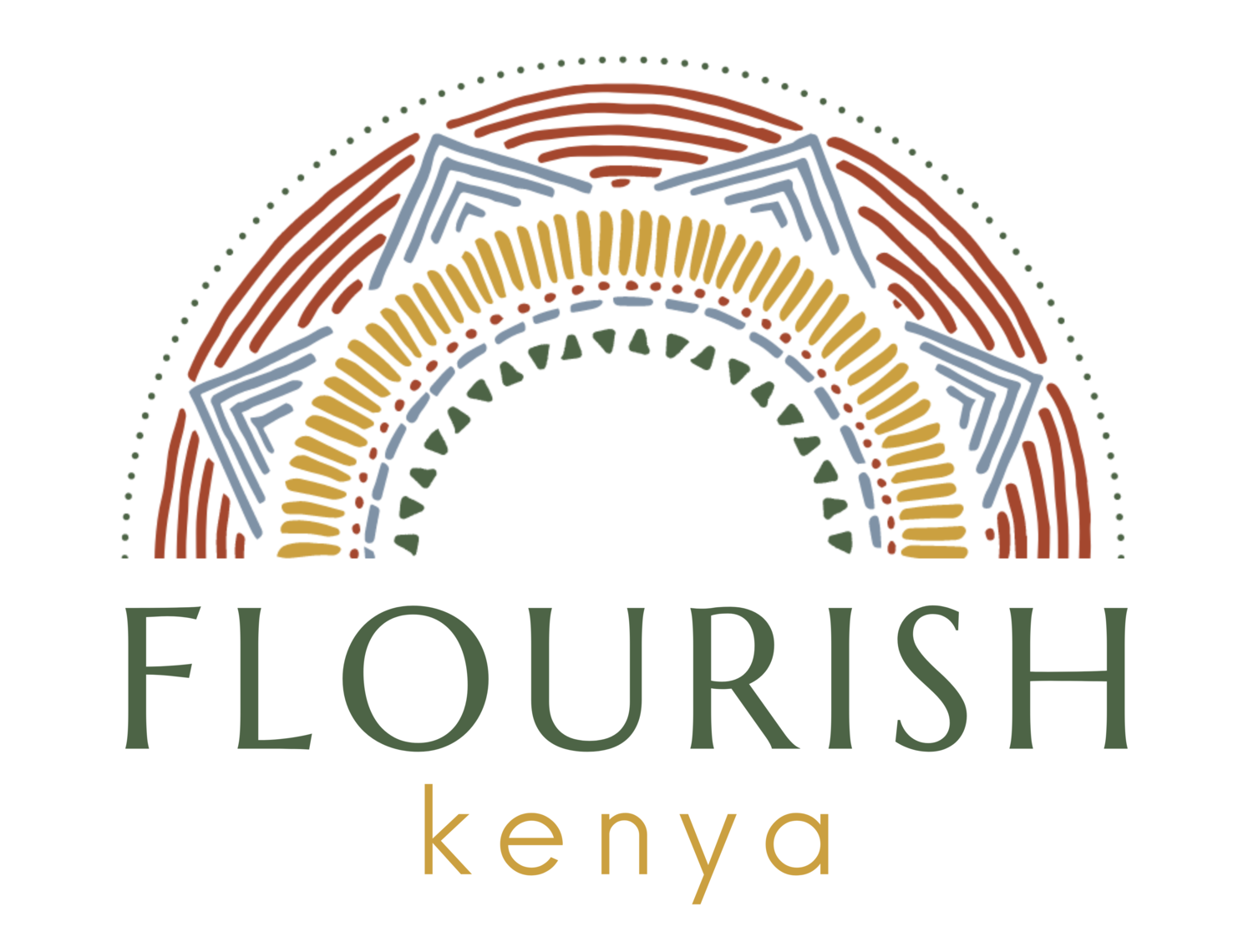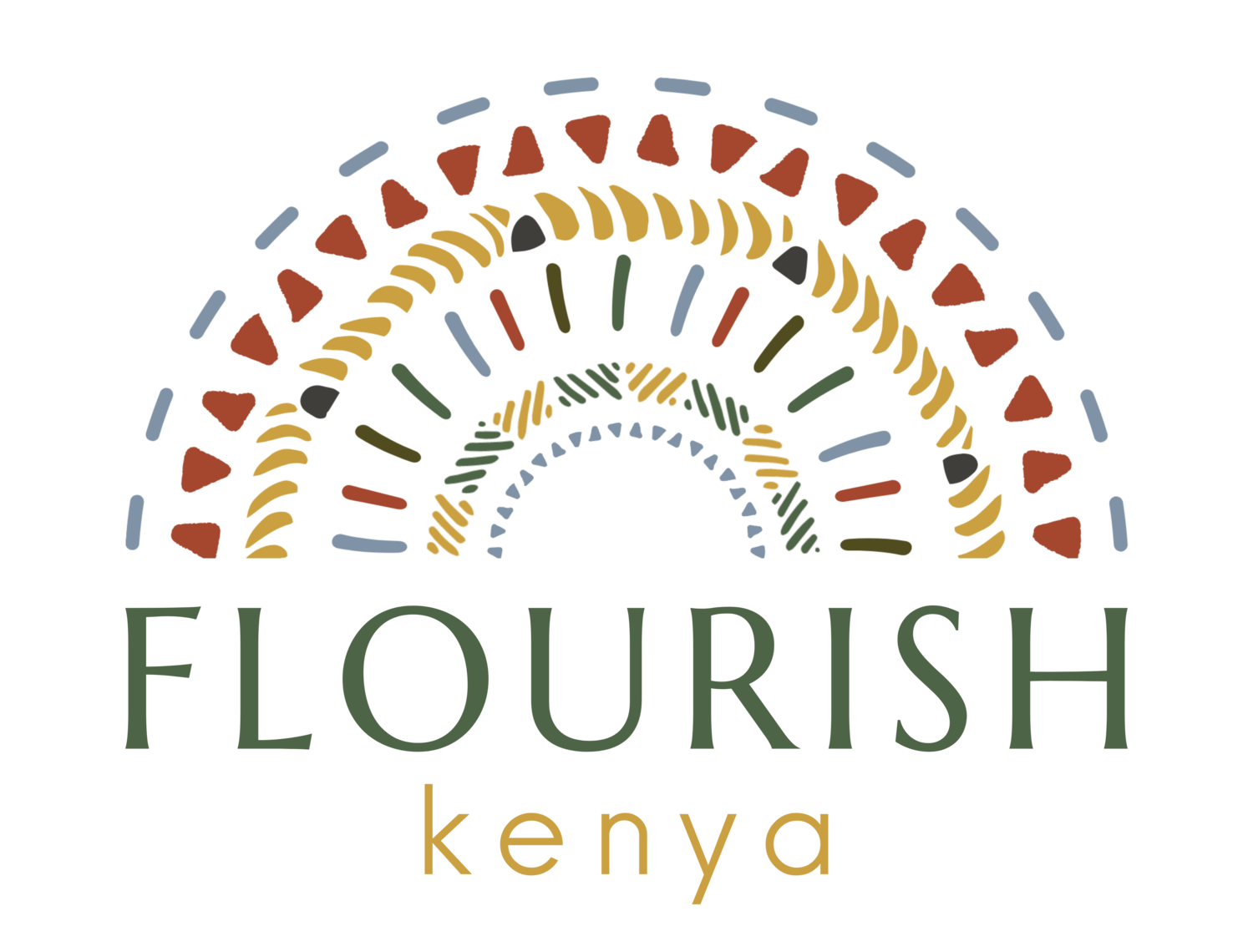Sustainability: More Than A Myth?
Three reasons to consider revenue-generating programs in your funding model
Some argue that true financial sustainability for nonprofits is a myth— an elusive ideal that can never be realized by the suckers with the wherewithal to pursue it. In recent years we’ve begun seeing more and more criticism of traditional philanthropic models, calling out their tendency to stretch NPOs rather than strengthen them.(1) Others accuse funders of holding sustainability like a carrot dangling from a string of single-year designated grants in front of cash-strapped nonprofits. Thankfully this thinking is leading to changes in grant-making strategies. Meanwhile, here at Flourish Kenya, we remain convinced as always that sustainability is much more than a myth— for us, it’s becoming a reality.
As a grassroots start-up in the thick of the growth phase of our organizational “life cycle,”(2) we are currently challenged to diversify our funding mix while we facilitate the paced growth of our brand, governance, and operations. One way we’re avoiding the allocation of a disproportionate amount of resources to grant writing is by establishing revenue-generating programs that will lead us to true sustainability.
THE TOP THREE REASONS WE FEATURE REVENUE-GENERATING PROGRAMS IN OUR FUNDING MODEL:
1- Social enterprise keeps our programming responsive to change.
By engaging in profitable business activities and fundraising, we keep our streams of income both flexible and targeted on community-led priorities. The money we earn is money we can spend on any and all needs within the organization— staff enrichment, organizational development, continuing education, and staffing— things that many funders are not chomping at the bit to get after.
(But! We want to give a HUGE shoutout to foundations like Dovetail Impact Foundation and Segal Family Foundation along with a growing number of others who get it and are offering multi-year, undesignated funds paired with capacity strengthening opportunities! You are our heroes!)
We believe that organizations need to limit chasing single-year, proposal-based grants that require extensive reporting. When they do, they are able to redistribute their efforts to funding categories that allow for adjusting programming to the dynamic needs of recipients. As a result, an organization can build programs based on the leading of the community rather than a funder’s priorities or affinities.(3)
Of course, creating a diverse funding mix is imperative, but many NPOs often miss the opportunity to add earned income to the kitty. Revenue generated from profitable programs can be allocated to any bucket within the board-approved budget. This is a great way to loosen up cash flow with increased operating reserves so that as program demands change, we can respond quickly and appropriately to the needs of our recipients.
2- Earned income decreases our reliance on donor funding.
Campaigns, events, monthly donor clubs, and major gifts programs are not without merit and are certainly part of our funding strategy. However, they demand a stable and steadily growing donor base in order to keep up with a growth-phase NPO such as Flourish Kenya. Many organizations at this stage are still running lean operations with limited manpower and a strong, but likely fatigued pool of loyal supporters. No organization can indefinitely make emergency pleas for unforeseen needs that arise outside of budgeting season. We’ve found that taking the heat off our most faithful donors looks like growing relationships with newer supporters identified through for-profit activities.
The truth is, most people want something more than a heart-warming story in exchange for their hard-earned money— until there’s a passionate connection to the cause, that is. So why not give them something of value for their money as a painless point of entry and then employ a sleek follow-up strategy? Whether they come on board in the end or not, we’ve turned an initial profit and created an opportunity to ask permission to keep them informed about our organization’s work. From there, we can do the long-term, authentic relational work of converting customers into donors who are willing to leverage their giving and their network for the mission.
3- Our revenue-generating programs are connected to our mission.
Speaking of the mission, it’s important to center earned income on activities that are tied to the mission. Not all opportunities are good opportunities. Some may divert resources and distract supporters from the core objectives of the organization.(4) When vetting revenue-generating programs, Flourish Kenya always evaluates for a connection or future contribution to the cause.
For instance, Flourish Kenya’s mission is to end the teen pregnancy epidemic in rural Kenya. Teen pregnancies are largely driven by FGM and child marriage. Our subject matter is difficult and doesn’t give potential donors and supporters warm fuzzy feelings immediately out of the gate, so we are continually working to craft our messaging to make it accessible to all. Sadly, many may find the issues we deal with triggering or too uncomfortable to sit with. In that way, our mission has forced our hand in getting creative with our funding model.
One way we softly connect people to the mission is by operating a tourism business that acts as a luxury travel supplier for professional Travel Advisors. Through Flourish Adventures, they can offer their clients an African safari that is “bigger than their bucket list.” All profits from travel packages sold are routed directly to our programs.
Best of all, every traveler has the opportunity to go and meet our local staff and board and when appropriate, see these programs in action if they choose. All of this happens on a dream vacation, growing their connection to and passion for the location, people, and mission.
Now, in this scenario, a commitment to avoiding toxic tendencies like poverty tourism takes relational capital only gained by experience and long-standing relationships with well-educated partners on the ground. That said, this model might not work for every organization operating in a tourism hot spot like Kenya. We take great care to avoid unintended consequences and only work with like-minded small businesses as our preferred local vendors. By doing so, an automatic ripple effect takes place, breaking the cycle of poverty for many more families than the few represented by our local staff.
We believe that every nonprofit organization has the potential to build in for-profit activities that will make their programs more agile, decrease their dependence on donor funding, and connect more people to their mission— if they get creative and dedicate time and talent to vetting opportunities.
Enterprise is exciting and somehow less intimidating than fundraising for many people. One great way to outsource this workload is to engage board members and advisors. Grow their ownership of your funding strategy by leveraging their skillsets to vet ideas and craft a business plan. Let them bring their ideas to the table and see what sticks.
Do you run a nonprofit? How can you infuse the power of profits in your funding model?
Do you run a nonprofit that already engages in social enterprise or generates revenue through your programs? Tell us (and our readers) about it in the comments!
https://www.exponentphilanthropy.org/blog/theres-no-such-thing-as-nonprofit-sustainabilityand-what-to-do-about-it-part-1/ and https://www.exponentphilanthropy.org/blog/theres-no-such-thing-as-nonprofit-sustainability-and-what-to-do-about-it-part-2/
https://ssir.org/articles/entry/promises_and_pitfalls_of_earned_income_business_models#
Written by Tia McNelly
Executive Director, Flourish Kenya
tia@flourishkenya.org
INTERESTED IN TAKING A TRIP THAT IS BIGGER THAN YOUR BUCKET LIST?
Send us a note using the form this form and we’ll connect you with an Adventure Specialist right away!















